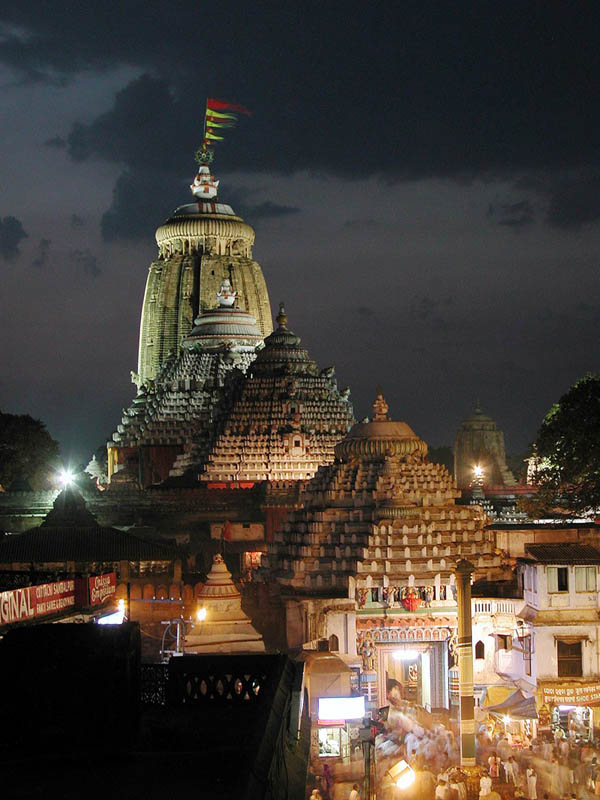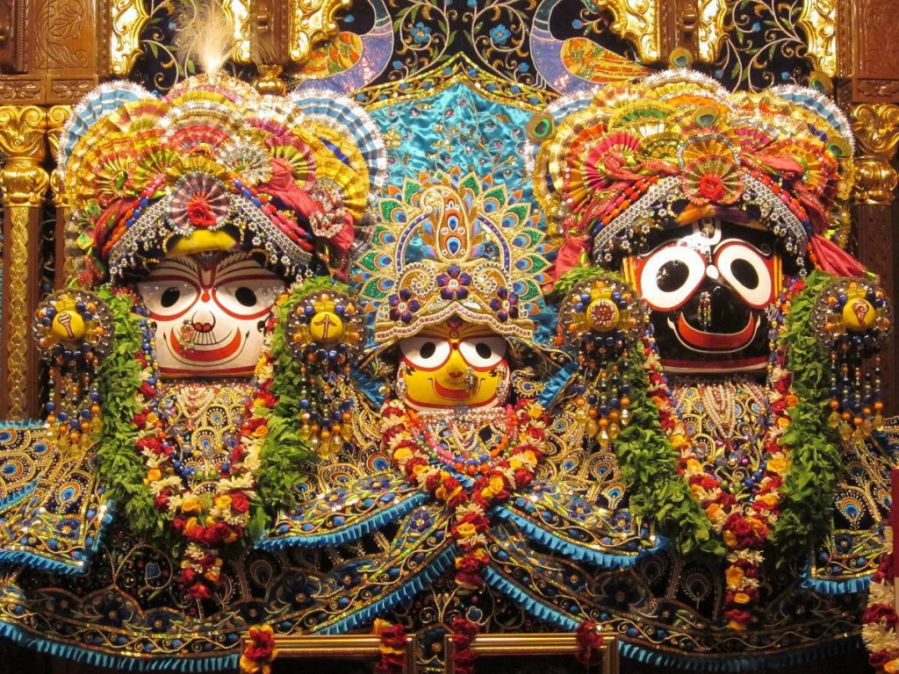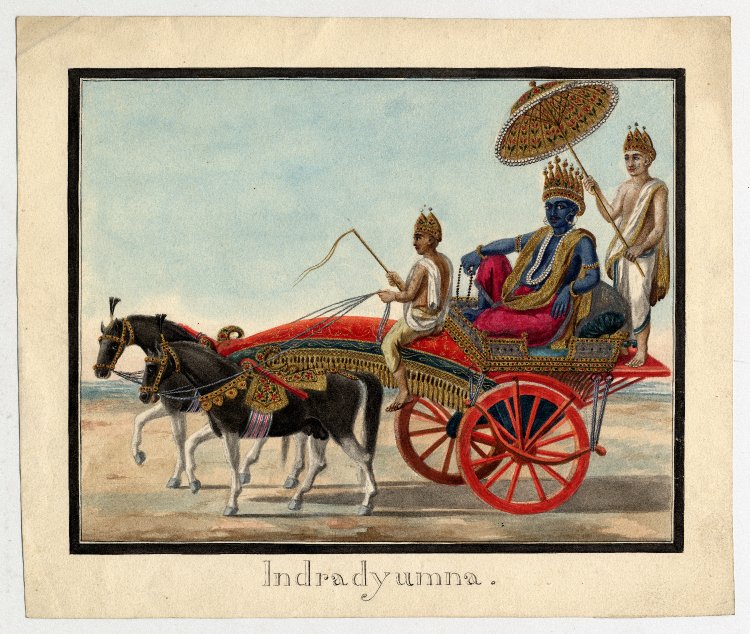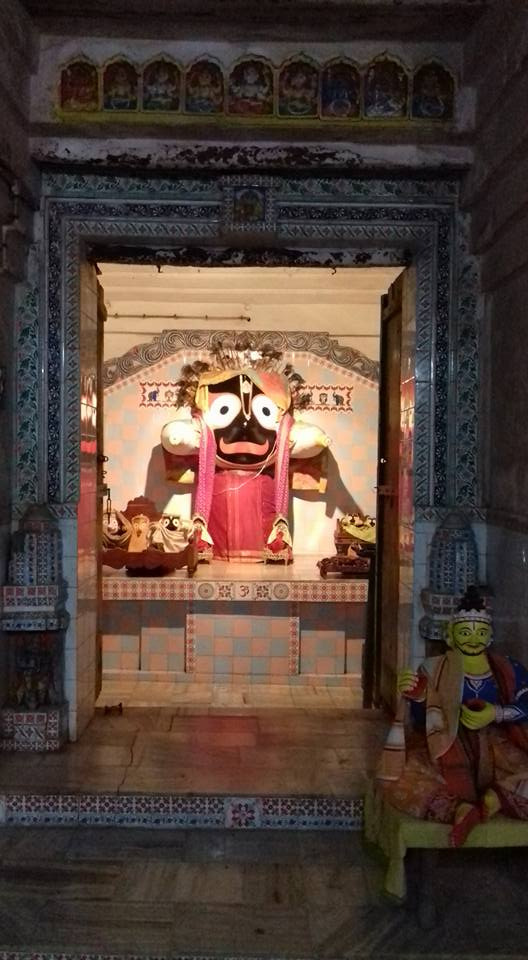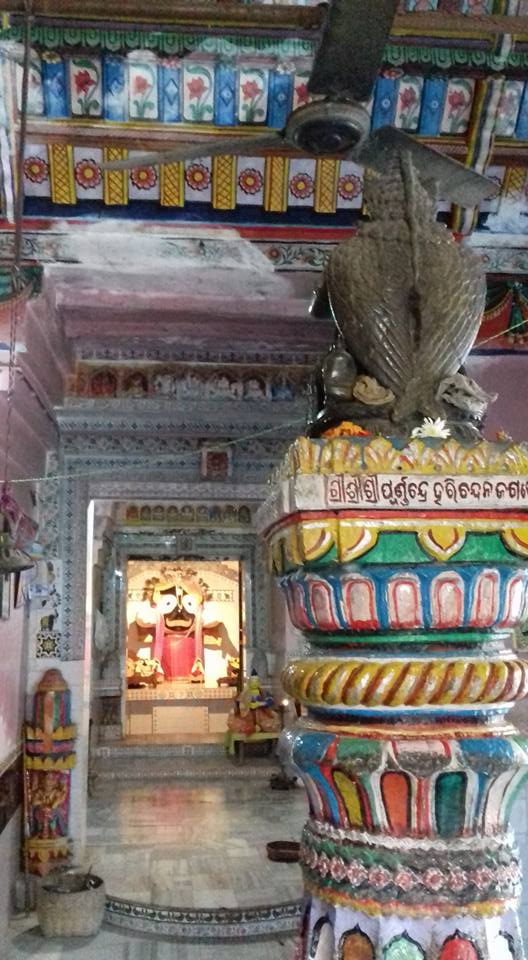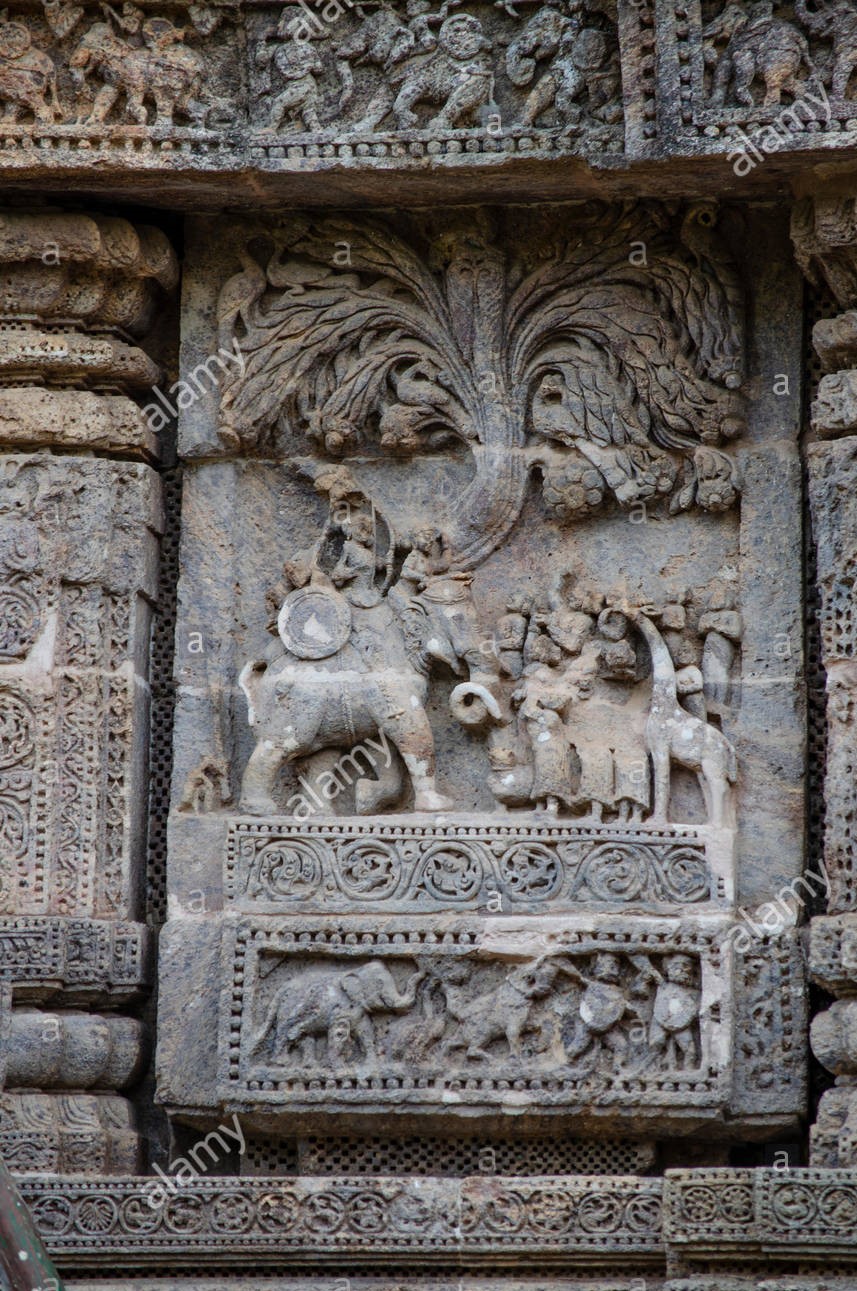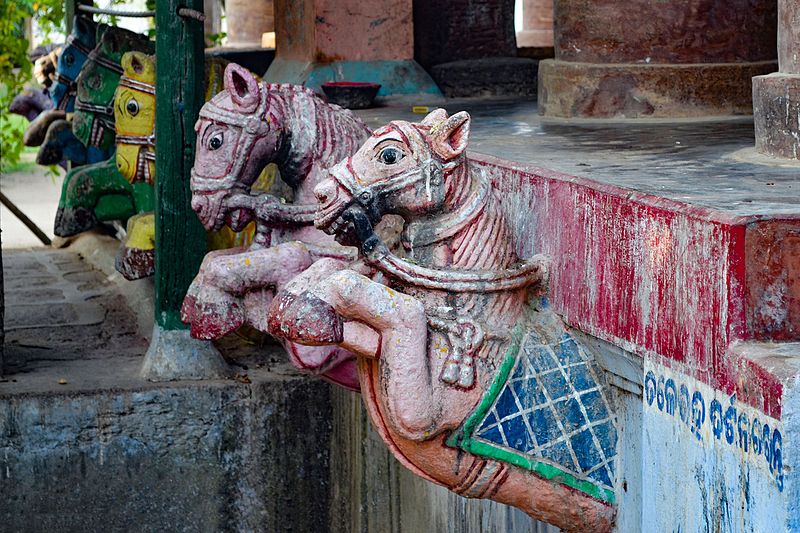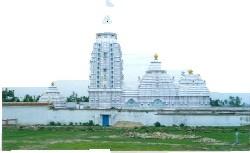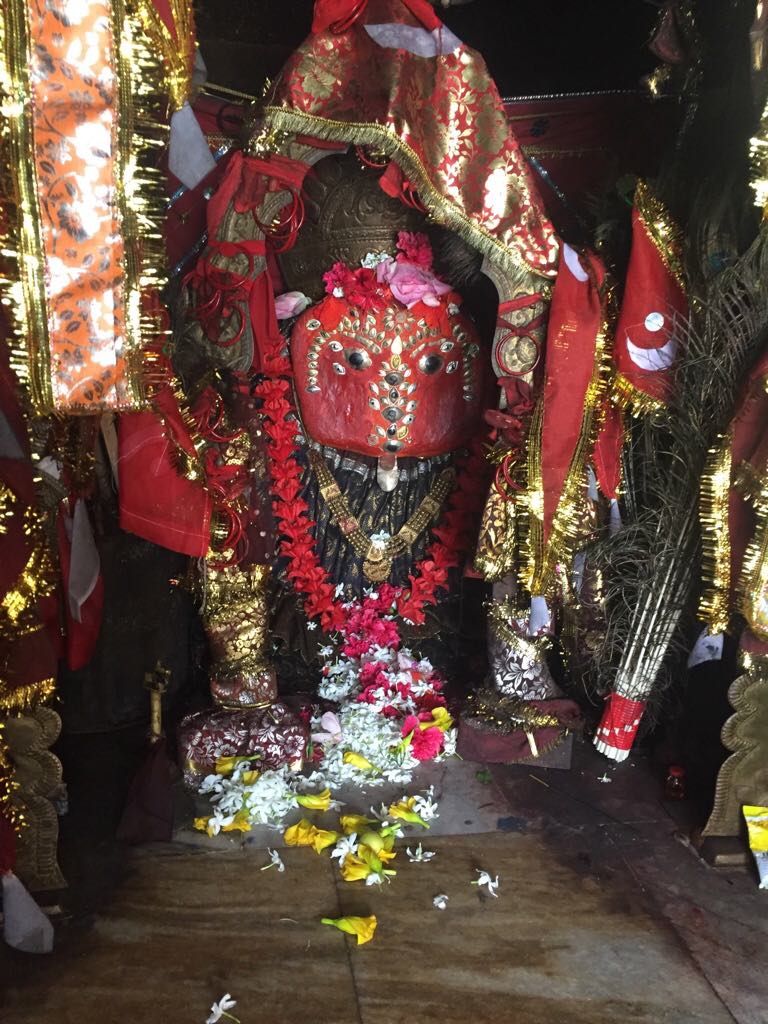Temples of the Surangi Kingdom
Jagannath Temple, Puri
The Shree Jagannath Temple of Puri is an important Hindu temple dedicated to Lord Jagannath, a form of Lord Maha Vishnu, located on the eastern coast of India, at Puri in the state of Odisha (also called Orissa). The present temple was rebuilt from the 10th century onwards, on the site of an earlier temple, and begun by King Anantavarman Chodaganga Deva, first of the Eastern Ganga dynasty, which was a predecessor to the Surangi Dynasty.
The temple is sacred to all Hindus and especially in those of the Vaishnava (in the worship of Lord Vishnu) traditions. Many great Hindu saints, such as Ramananda and Ramanuja were closely associated with the temple. Enlightened Saint Ramanuja established the Emar Mutt (Hindu monastery) just outside the main circumambulation path in this temple. Enlightened Saint Sri Adi Shankaracharya established the Govardhan Mutt (monastery), which is one of the four Hindu seats he established within his lifespan of 32 years and this mutt is associated with the Jagannath Temple in Puri. It is also of particular significance to the followers of the Gaudiya Vaishnavism (a subsect of Vaishnavism – followers of Lord Vishnu) that their founder – enlightened Saint Chaitanya Mahaprabhu was attracted to the Jagannath deity and lived in Puri for many years.
Jagannath Temple, Puri
The three main deities – Jagannath, Balabhadra, Subadhra
Puranic (History) Story
The traditional history concerning the origins of the Lord Jagannath temple is that here the original image of Jagannath (a deity form of Vishnu) at the end of the Treta yuga (the second of the four yugas, or ages of mankind) manifested near a banyan tree, near the seashore in the form of an Indranila mani or a Blue Jewel. It was so dazzling that it could grant instant moksha (enlightenment), so the God of death, Yama, wanted to hide it in the earth and was successful. In Dvapara Yuga (third of the four yugas, or ages of mankind), King Indradyumna of Malwa wanted to find the mysterious deity and to do so he performed intense penance. Lord Vishnu then instructed him to go to the Puri seashore and find a floating log to make His image from its trunk.
(By Company School – https://www.britishmuseum.org/research/search_the_collection_database/search_object_details.aspx?objectid=182810&partid=1&searchText=company+school&fromADBC=ad&toADBC=ad&numpages=10&images=on&orig=%2fresearch%2fsearch_the_collection_database.aspx¤tPage=53, Public Domain, https://commons.wikimedia.org/w/index.php?curid=22271932)
The King found the log of wood. He did a yajna (sacred fire ritual) from which God Yajna Nrisimha (a form of Lord Vishnu) appeared and blessed him. When this log, radiant with light was seen floating in the sea, Narada told the king to make three deities out of it and place them in a pavilion. Indradyumna got Vishwakarma, the architect of the Gods, to build a magnificent temple to house the deities and Lord Vishnu himself appeared in the guise of a carpenter to make the deities on the condition that he was to be left undisturbed until he finished the work.
But just after two weeks, the Queen became very anxious. She took the carpenter to be dead as no sound whatsoever coming from inside the temple where he was supposedly working. Therefore, she requested the king to open the door. Thus, they went to see Vishnu at work at which the latter abandoned his work leaving the deities unfinished. The deity was left with no hands. But a divine voice told Indradyumna to install them in the temple. It has also been widely believed that in spite of the deity being without hands, it can watch over the world and be its Lord.
Despite being invaded and destroyed eighteen times during the times of persecution of Hinduism and its rich tradition, this temple stands as a symbol of the will persistence and immortality of Hinduism, still flocked by lakhs of pilgrims and devotees each year, who travel from across the country and around the world to have a glimpse of Lord Jagganath.
(Ref: https://en.wikipedia.org/wiki/Jagannath_Temple,_Puri)
Jagannath of Surangigada
Jagannath Temple in Surangigada was built by the king of Surangi during the 2nd part of the 18th century. He also donated lands for the maintenance of its deities. The rituals and customs of this temple are maintained exactly like that of the Jagannatha temple in Puri, with the only difference being that the chariot is pulled a day after Sukla Duitiya i.e., the second day of the Ratha Yatra festival (chariot procession).
The Inner Sanctum of the Temple, with the Main Deity of Lord Jagannat
Typical Orissa-Style Architecture Seen Inside the Temple with the Flamboyant Use of Colours and Intricate Detailing in the Panels.
The Temple Gates, As Seen from the Outside.


A Seating Area in the Temple Premises Built by the Rajas (Kings) of Surangi
Konark Sun Temple
A full view of the Konark Sun Temple.
This sculpture found in the Jagannath temple depicts its builder King Narasingha Deva I seated on a war elephant and being presented with a Giraffe by a few African merchants
Dedicated to the Hindu Sun God Surya, what remains of the temple complex has the appearance of a 100-foot high chariot with immense wheels and horses, all carved from stone. Once over 200 feet (61 m) high, much of the temple is now in ruins, in particular, the large shikara (tower) over the sanctum; at one time this rose much higher than the mandapa (structure) that remains. The structures and elements that have survived are famed for their intricate artwork, iconography, and themes. Also called the Surya Devalaya (Literally means Sun Temple), it is a classic illustration of the Odisha style of Architecture or Kalinga Architecture.
Puranic History of Konark Sun Temple:
Samba, the son of Sri Krishna (incarnation of Lord Vishnu) and Jambavati, incurred the displeasure of Sage Narada. Narada revenged himself by cursing Samba with leprosy. Ultimately, when Samba, was found blameless, he was advised to practice penance in the Maitreyi forest for 12 years to please Surya (Sun God) to cure him of his disease. He acted accordingly and after the prescribed period the Sun God appeared before him and asked him to recite the twenty-one different names of the Sun God. The next morning when Samba was taking his bath in The River Chandrabhaga, his hands came in contact with something in the water. He immediately lifted it up and saw an image of Surya standing on a lotus pedestal, holding two lotuses in both hands. He carried the image to his Ashram (monastery) and installed it in a temple, built by him. Samba was however completely cured, after some time, by worshipping the deity.
This location is said to be the location of the Konark Sun Temple.
(Ref: https://www.shreekhetra.com/konback.html#content-start)
Biranchinarayan Temple, Buguda
About the Temple
Famously called as the wooden Konark, this wooden masterpiece of temple architecture is dedicated to Biranchi Narayan – the Sun God. The temple was built by the Ghumusar King Srikar Bhanja after he ascended the throne in 1790.
The temple is built like a chariot drawn by seven horses. The exquisite wood carvings and paintings on the walls are the highlights of the temple. The walls are made of lime and mortar and the ceilings and facade are made of timber. One peculiar aspect of the temple is that it is West facing, unlike other Sun temples which are east facing. The temple is designed in such a way that the last ray of the Sun falls on the temple.
The temple is built like a chariot drawn by seven horses
Hindu epics like Ramayana, Mahabharata and other stories from the Puranas (Hindu History) adorn the walls of this temple and are depicted in typical Odisha-style artwork.
History
The deity in this temple was found in the ruins of Malatigarh. According to history, a shepherd struck his foot on a metal plate at the foot of a hill. When the villagers dug up the area, they found a life-size deity of the Sun God and brought it to Buguda. Subsequently, the temple was built in which the Sun God known as Biranchi Narayan was consecrated.
(Ref: https://odishatourguide.com/temple_post/biranchi-narayan-temple/)

The inner sanctum of the temple, with the deity of Surya Deva – the Sun God.

View of the Biranchinarayan Temple from the outside


Interiors of the temple with intricate wooden carvings, with colourful paintings of scenes from the Puranas.
(https://en.wikipedia.org/wiki/Biranchinarayan_Temple,_Buguda
Kanaka Durga Temple, Raulpalli
The Kanaka Durga temple is dedicated to Goddess Mahishasuramardini (meaning destroyer of the demon Mahishasura) and is located in the Raulapalli village on a small hillock in Orissa. Based on architecture and local inscriptions, the temple was renovated in the early 19th century after the old one was destroyed due to the foreign invasions. The temple tower of the main shrine is a golden tower.
The presiding deity is an image of Durga (Cosmic Mother) having six hands and slaying the demon Mahishasura. The slaying of demons by Gods in Hindu history symbolically represents slaying of the collective negativity inside each living being for enlightenment to flower. Durga Puja is celebrated with pomp and joy here, celebrating the slaying of the demons and therefore destruction of negativity. Another major festival is Chaitra Utsava (celebrations of Durga in the month of March-April).

The deity of Durga in taken to the streets during Durga Puja

The golden Gopuram (temple tower) in the inner path of the temple.
Mausima Temple
The three chariots of Jagannatha, Balabhadra and Subhadra (the three main deities of the Jagannath Puri Temple) start from the Singha Dwara (Lion Door) of the Temple of Jagannath and reach at the ‘Gundicha Temple’, at the other end of the town. In between the ‘Gundicha Temple’ and ‘Singha Dwara’ there comes the shrine of the Goddess, Ardhamsini or Ardhasini. Popularly known as the Mausima (meaning aunt) of Jagannath where the Lord takes a food offering of ‘Podapitha”, a special cake made of urad dal. It is stated in “Skanda Purana” – Vaisanava Kandha (subsection), that during the great deluge, when the sea flooded Puri, this Goddess drank half of the floodwater and saved the people of the town. Therefore her name becomes Arthamsini, or the one who Swallows.
Siddha Bhairavi Temple
Siddha Bhairavi Temple is a shrine situated at Mantridi in the Ganjam district of Odisha, India. The presiding deity is Goddess Bhairavi. It is said that this deity was excavated from a ploughed field and was enshrined as such in a new temple in 1937.
The temple houses 108 sub-shrines dedicated to all Hindu Gods present from Kashmir to Kanyakumari (the northern and southern tips of India) like the 12 jyotirlingas, Vaishno Devi, Dashavatara, Venkateshwara, Ranganatha, Meenakshi, Badrinath and more. A big shrine is also present which houses Lord Jagannath, the presiding deity of Orissa along with his siblings. It is believed that at the end of Kaliyuga (the fourth quarter of the time), Bhairavi Devi will accompany Kalki Avatar (the final incarnation or avatar of Lord Vishnu) in restoring Dharma (Cosmic Principles).
Goddess Bhairavi was worshiped by the Pancha Pandavas (Kings of the Kuru Dynasty) in Dvapara Yuga (the second of four Yugas, or ages of mankind). The fishermen and sailors worship to the goddess before the commencement of their journey. The Goddess is also known as the prime deity of Sadhabas (ancient mariners of the Kalinga empire).
The 35-feet-high temple of Goddess Bhairavi is the main attraction of the place, which is surrounded by three funeral sites on the outskirt of its nearby villages. Ancient art and culture of Odisha can be viewed in the walls of this temple. The sculpture of the deity is situated 4 feet below the ground level. The deity has four hands and one leg, which is why She is named as ‘Ek Pada Bhairavi’ meaning standing on one leg.
Narayani Temple
Narayani Temple is dedicated to the ten-armed Goddess Narayani or Lakshmi and is located in the Narayani village situated near Khalikote, Odisha (Orissa), India. The temple is popular for Durga Puja – the ten-day festival celebrating the victory of the Goddess over the collective negativity and a fair (selling all the associated traditional items in it) is held in the Indian month of Chaitra (April-May). The temple was renovated by the Zamindars of Khalikote village in the early 18th century. It is supposed to have existed before the 12th Century AD. The temple is known for the scenic beauty of the surrounding countryside including the Chilika Lake. The temple though lacking in architectural finesse is a revered worship place even today.
Unfortunately, a major part of the temple is today covered in thick vegetation and is in ruins due to Mughal invasions.

Shrine of Mahavishnu and Devi Lakshmi

A side view of the functional parts of the temple.
Taratarini Temple
Entrance of the Taratarini Temple
The shrine is considered as one of the most revered Shakti Peethas – pilgrimage centers of the Shaktas (the tradition worshipping Devi, the Divine Feminine energy) sect of Hinduism. Shakti Peethas are holy abodes of Parashakti – the Universal Cosmic Mother. This is believed to have originated from the Puranic (from Hindu History) story when Paramashiva carried Sati’s immolated body across the planet in his grief and wandered. Where each part of her body fell, there a Shakti Peetha was consecrated and Parashakti is worshipped. There are 51 Shakti Peethas and 26 Upa Peethas spread across the Indian sub-continent. Sati Devi’s breasts are believed to have fallen here in Tara Tarini. The Shakti of the shrine is addressed as Maa Tara Devi.
The great Hindu texts including the Shiva Purana and the Kalika Purana recognize the four major Shakti Peethas. These are:
1. Bimala, Pada Khanda (Sati’s feet) inside the Jagannath Temple, Puri,
2. Tara Tarini Sthana Khanda (Sati’s Breasts), near Brahmapur, Odisha,
3. Kamakshi, Yoni khanda (Sati’s Uterus) near Guwahati, Assam and
4. Dakhina Kalika, Mukha khanda (Sati’s face) in Kolkata, West Bengal
In a hymn, the Kalika Purana clearly lists these:
“Vimala Pada khandancha,
Stana khandancha Tarini (Tara Tarini),
Kamakhya Yoni khandancha,
Mukha khandancha Kalika (Kali)
Anga pratyanga sangena
Vishnu Chakra Kshate nacha…”
Krunashini Devi
Krunashini Devi
Krunashini Devi is the Kuladevata (main deity worshipped by a clan) of the Surangi Royal Lineage. Kuladevata, also known as Kuladeva or Kuladevi is an ancestral tutelary deity in Hinduism, who is often the object of one’s devotion (bhakti), in order to coax the god for favors and to have the god the watch over one’s family and children from probable misfortune. The word Kuladevata is derived from two words: Kula, meaning clan and Devata, meaning deity. Thus, it can be said that Kuladevatas are deities which are worshiped by particular clans. The deity can be a male, female, animal or even an object, like a holy stone. Hindu families make a pilgrimage to the Kuladevata or Kuladevi temple to obtain the blessing of the deity after an auspicious occasion such as a wedding.

